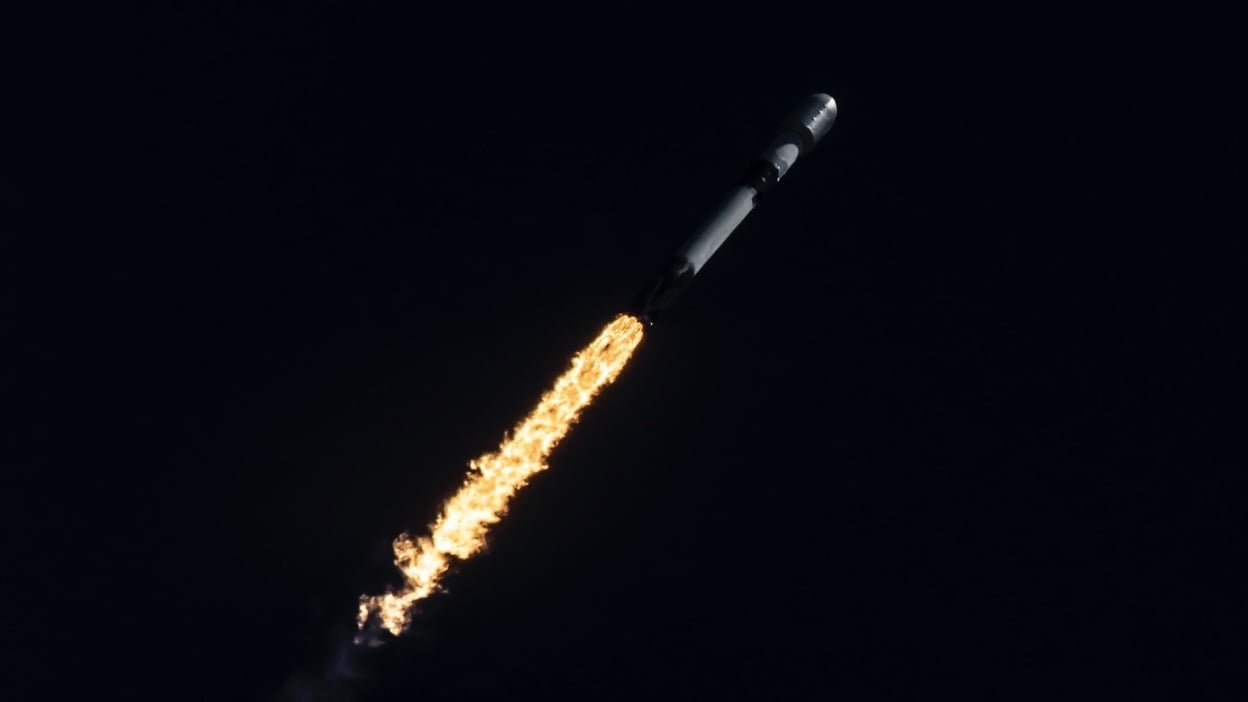SpaceX can't launch its busiest rockets following a rare mishap during a routine flight late Thursday night. The flight was supposed to place 20 new Starlink satellites into space, which provide internet access to some of the most remote places in the world.
One of the company's Falcon 9 rockets experienced a failure, after lifting off from Vandenberg Space Force Base in California on July 11. The beginning of the flight was livestreamed on X, the social platform owned by SpaceX's billionaire founder Elon Musk, but the broadcast apparently ended before the incident happened.
Though Musk originally said the rocket's upper stage engine had experienced a "RUD" — slang for a vehicle breaking apart or failing. In a statement, SpaceX said that the rocket had survived, but the Starlink satellites it carried weren't delivered correctly to orbit.
The botched mission means the satellites will inevitably burn up or crash back to Earth, according to the statement posted on the company's website on Friday. SpaceX did not say when or where they were expected to return.

As of Sunday, about three days after the Falcon 9 failure, the status of the satellites was still unclear, despite Mashable inquiries to SpaceX, the U.S. Space Force, and the Federal Aviation Administration. An FAA spokesman said in an email that someone would respond to the request on Monday.
SpaceX's orbital data, which comes from onboard measurements, stopped sometime on July 12, said Jonathan McDowell, an astrophysicist at the Harvard & Smithsonian Center, who is also well-known for tracking spacecraft and debris in Earth's orbit. The company insisted the satellites would not "pose a threat to other satellites in orbit or to public safety" in its Friday statement.
"I believe all the objects have very likely now reentered," McDowell said in an email on Sunday, "but we don't know for sure."
Tweet may have been deleted
The above X post contains a video of the troubled Falcon 9 rocket before its mishap.
The Falcon 9, dubbed SpaceX's "workhorse" because it launches the most frequently, has had an unblemished record for years. It has blasted off over 350 times, carrying thousands of Starlink satellites and commercial payloads into low-Earth orbit.
It is also the rocket that takes NASA astronauts to the International Space Station. The vehicle's last major failure was an explosion on the launchpad in 2016 — four years before it began flying humans.
So far the company has said it believes the problem was a liquid oxygen leak, rendering the upper stage unable to perform a necessary engine burn. Flight controllers attempted to send commands to the satellites to adjust their positions, but it likely wouldn't be enough to keep the hardware from falling back to Earth.
Tweet may have been deleted
The FAA is requiring SpaceX to investigate itself to determine what went wrong and how to fix it. Federal officials will then determine when the company can resume Falcon 9 launches.
It's not yet known how the investigation will disrupt SpaceX's overall launch schedule, including for flights carrying people.
"We are tracking to do more Falcon flights this year than [NASA's Space] Shuttle did in 30 years, the vast majority of which are uncrewed," Musk said on X. "A major advantage of this super high flight rate is that we can identify and resolve problems that may only occur once every 1000 flights. This is impossible on a low flight rate vehicle."
Topics SpaceX

































